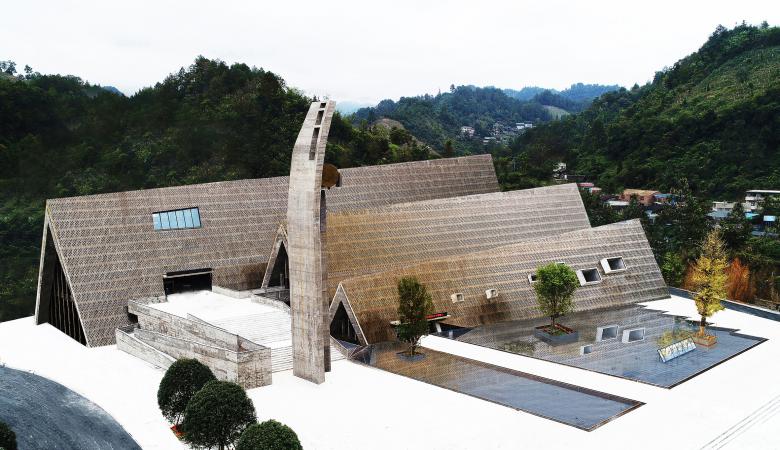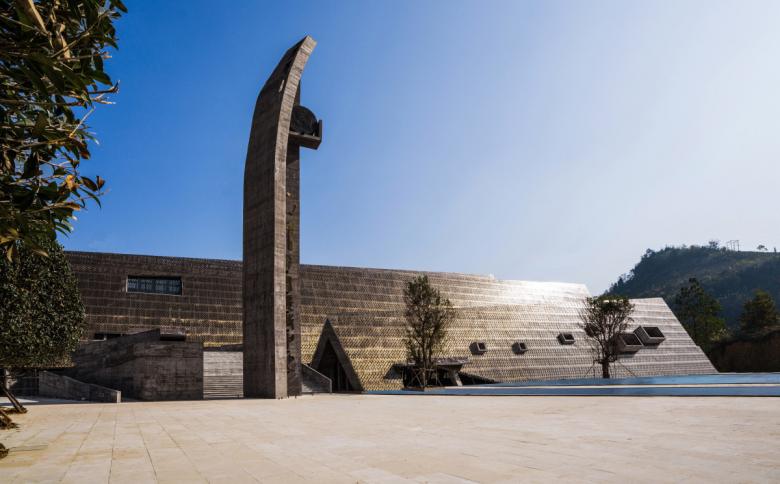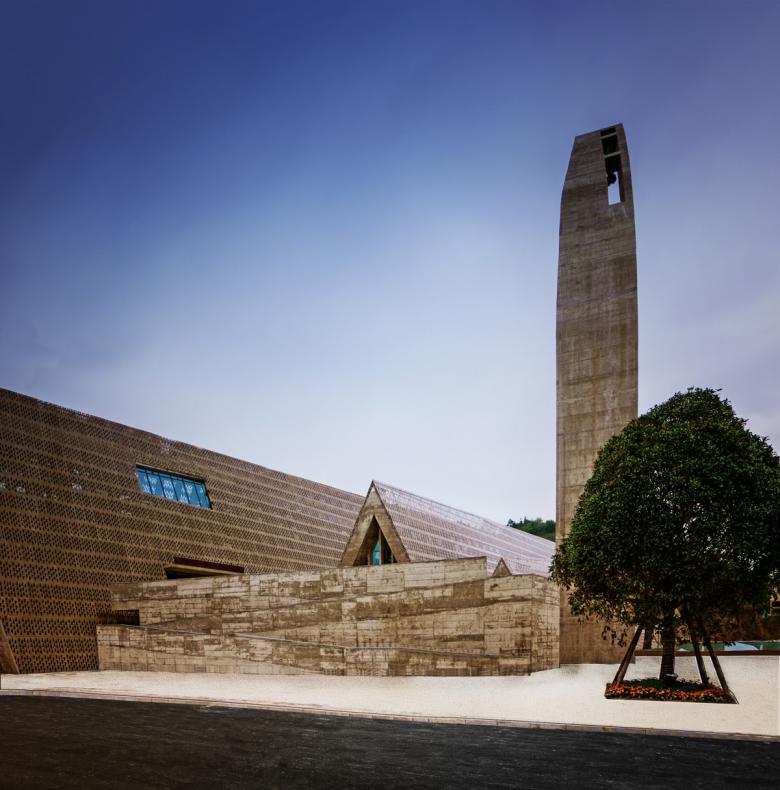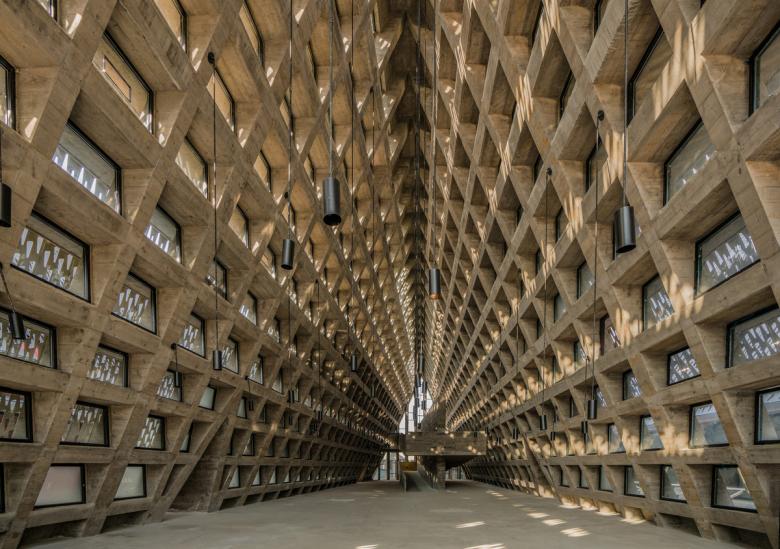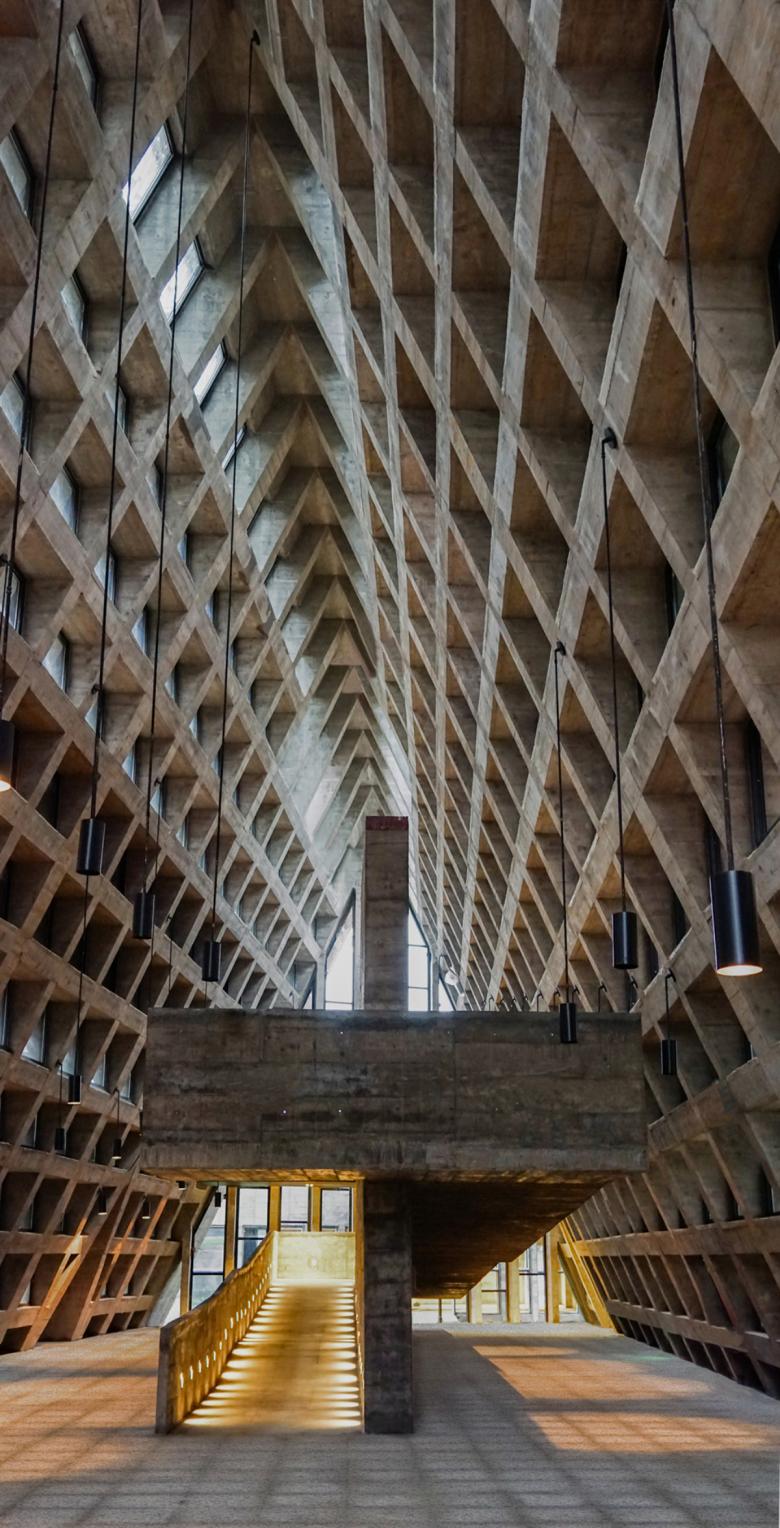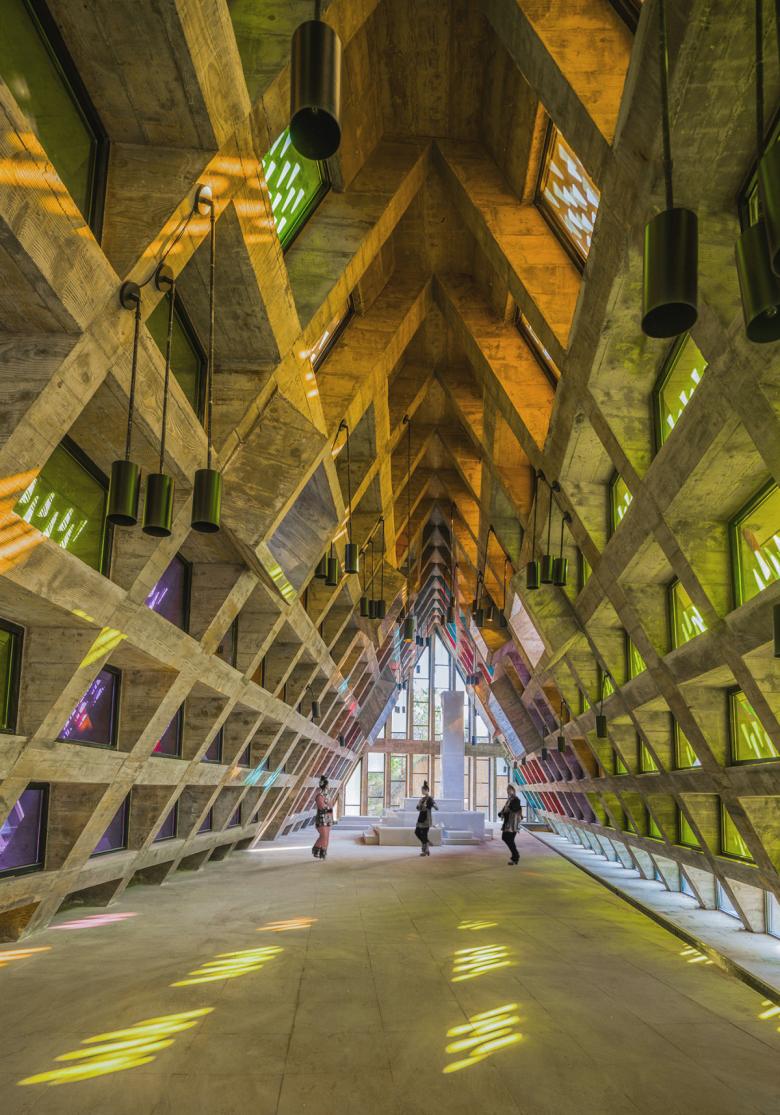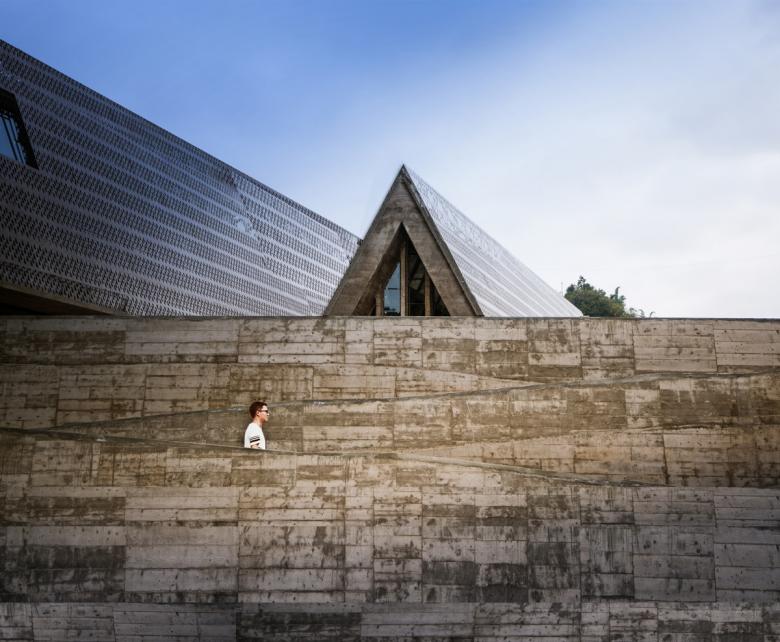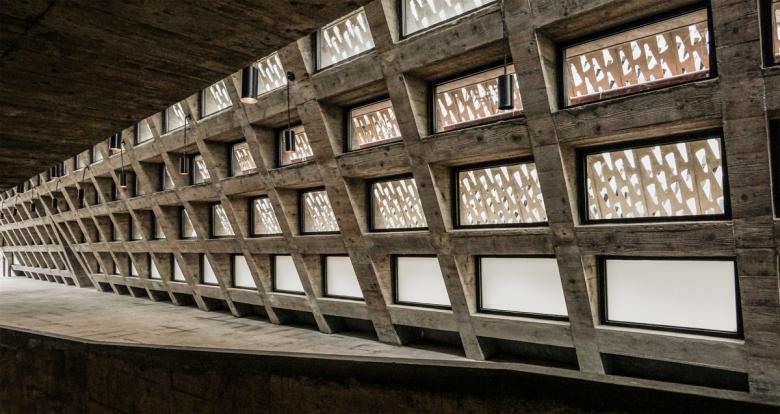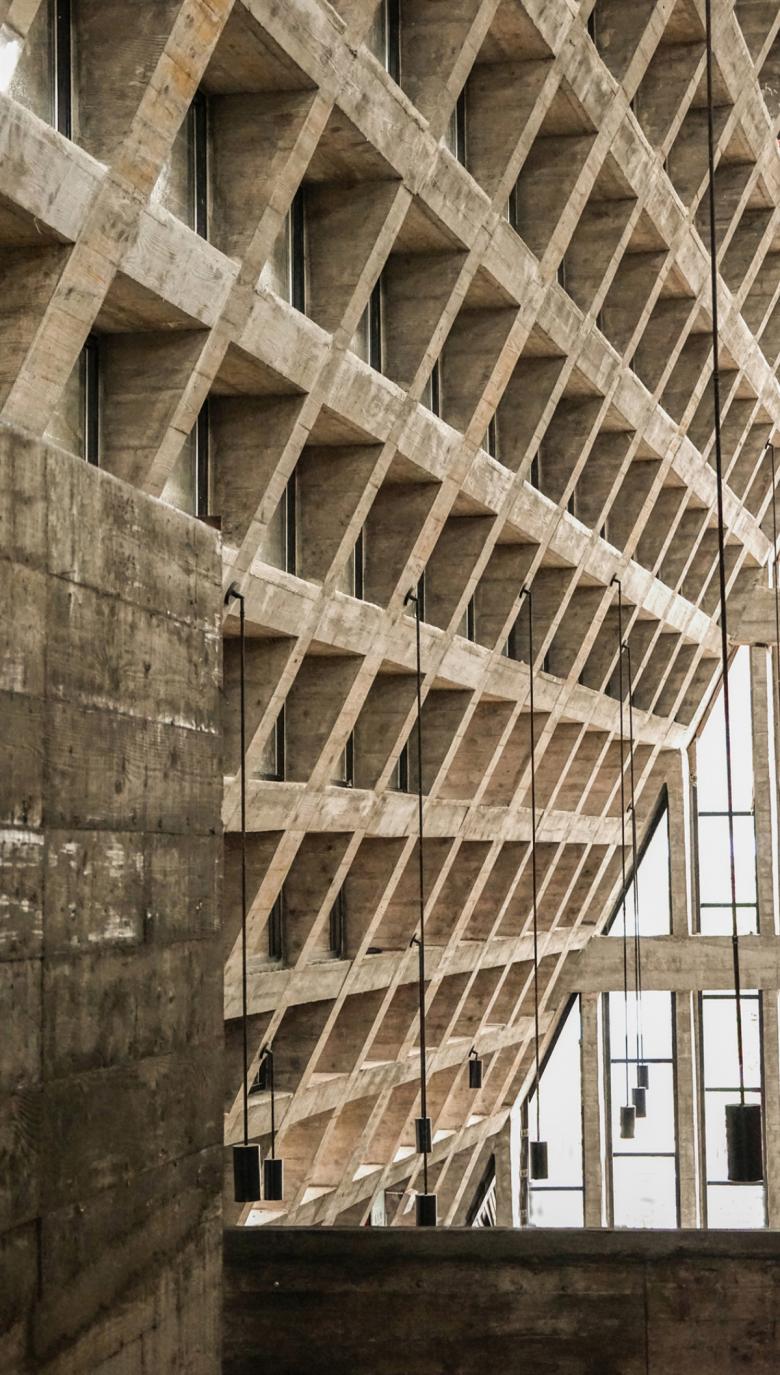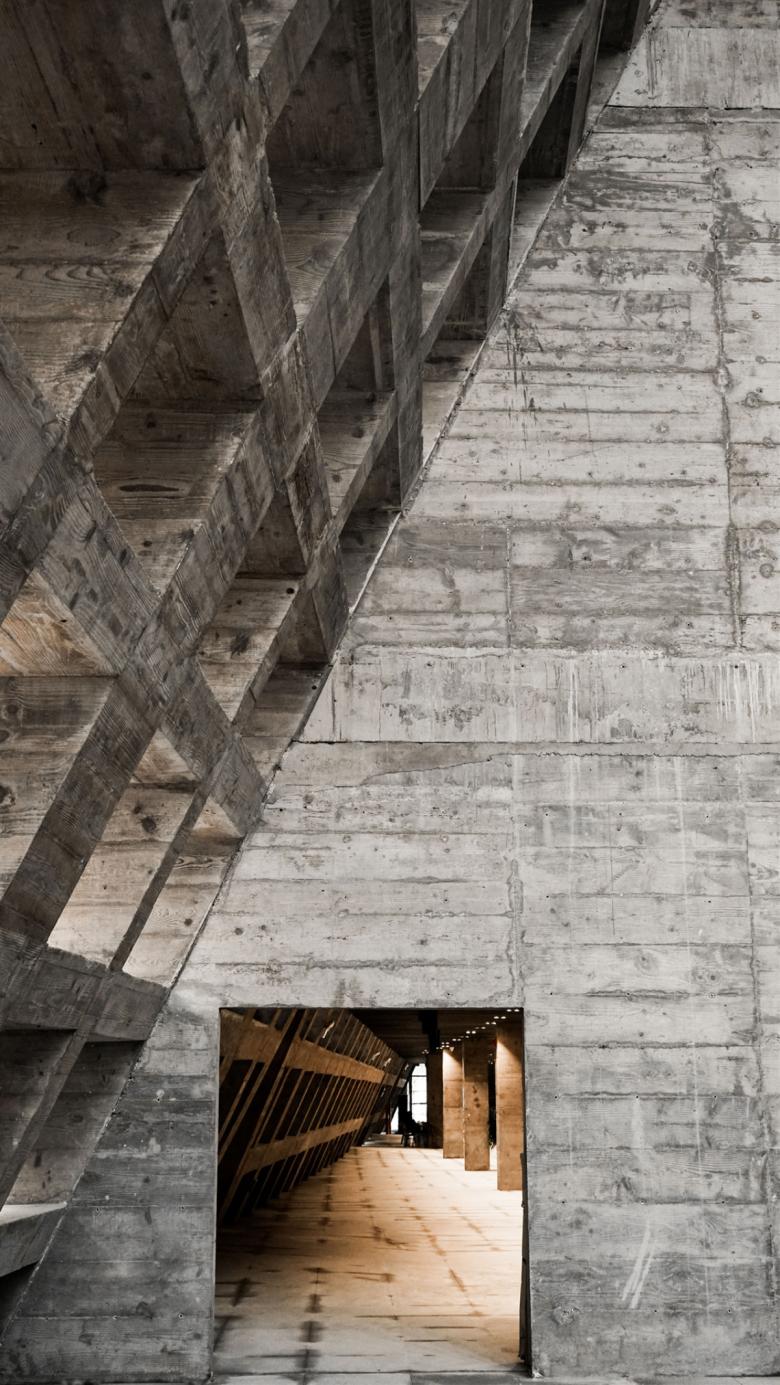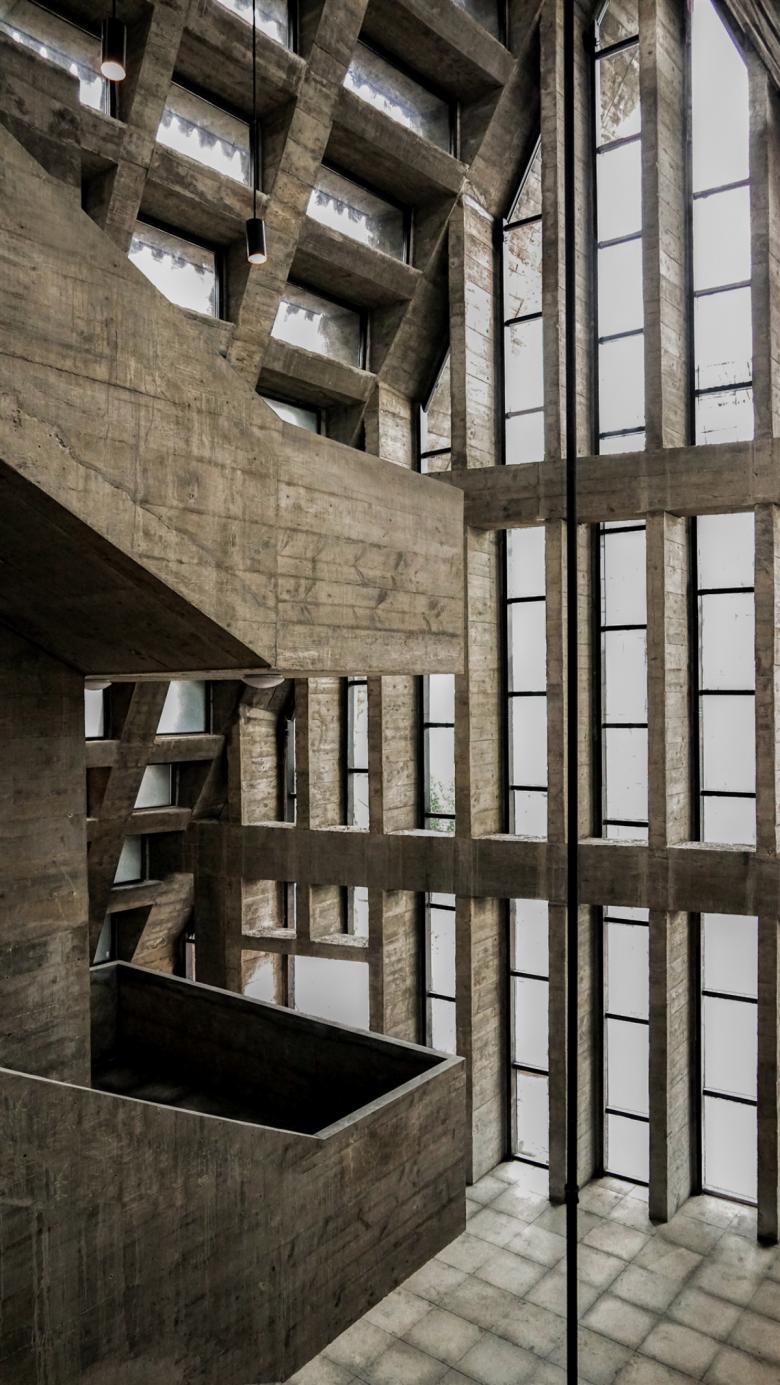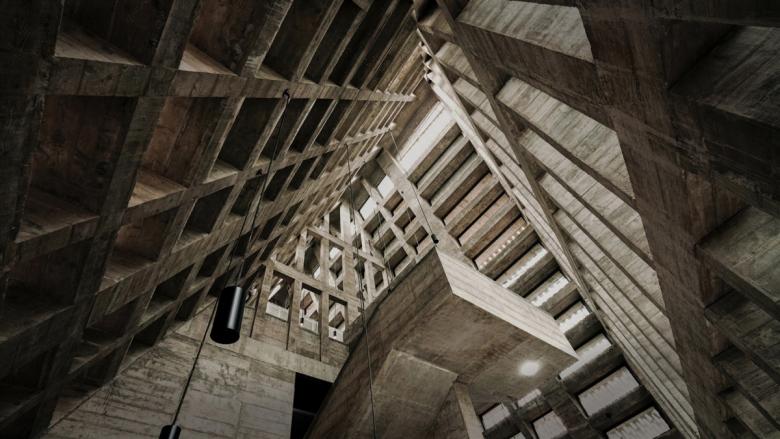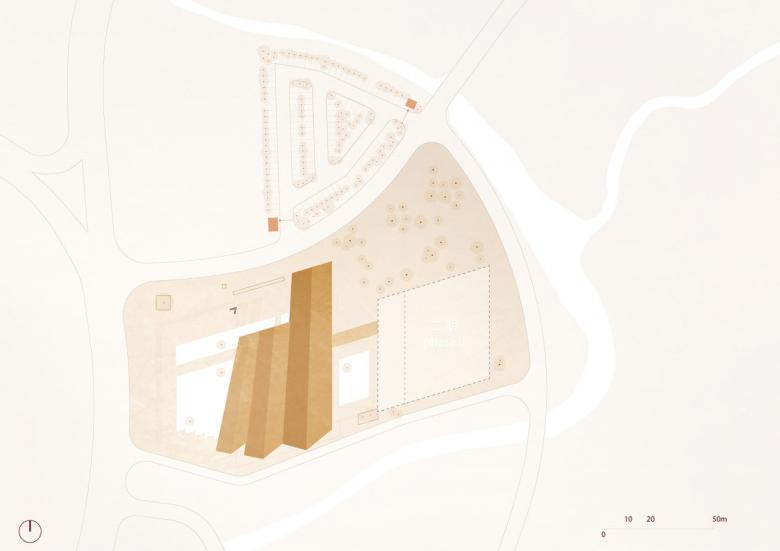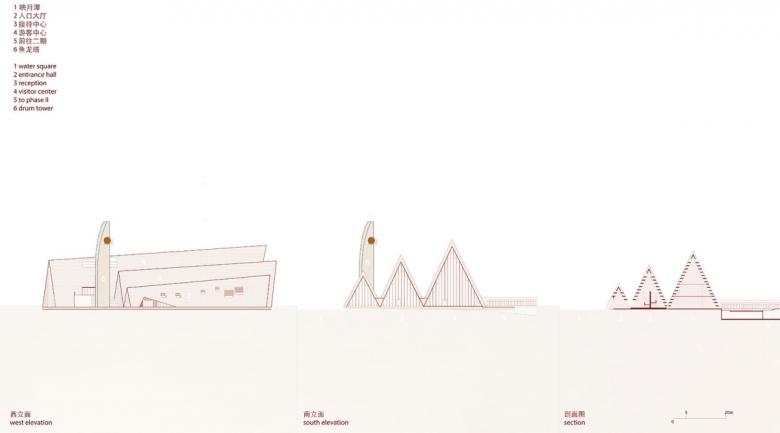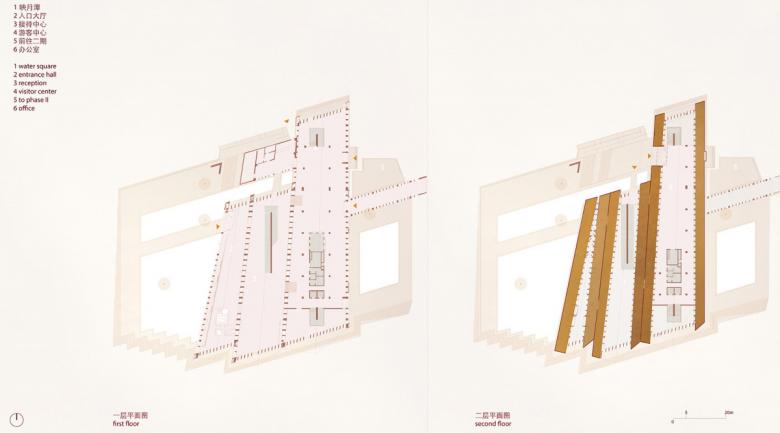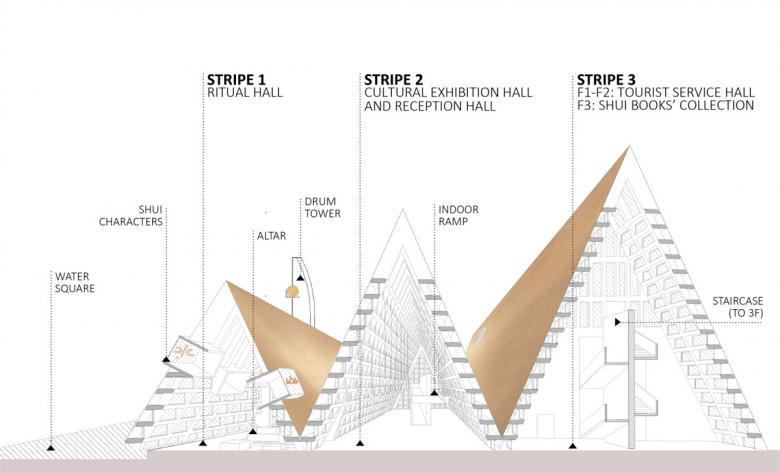Shui Cultural Center
Guizhou Province, China
- Architetti
- West-line Studio
- Sede
- Qiannan Autonomous Prefecture, Guizhou Province, China
- Anno
- 2017
- Site Area
- 13808.04 sqm
- Building Area
- 4223.59 sqm
- Design Team
- West - line Studio
- Lead Architects
- Haobo Wei, Jingsong Xie
- Architecture
- Yudan Luo
- Site Construction Control
- Haobo Wei
- Interior Design
- Martina Muratori
- Structure
- Yuanping Li, Xiaoqiang Yang
- Facade Materials
- Customized Double-sided Copper
- Plates
- Dimension: 1200×600; Thickness: 1.5 mm, treated with 12 composite procedures to overcome corrosion
Located in Qiannan Autonomous Prefecture, Guizhou Province, Shui Cultural Center is the land of the Shui. The Shui Nationality is one of the ancient ethnic minority groups in China. Despite being small in number, the Shui people still retain their own language, together with their unique system of pictographs. The whole project reminds of their traditions as well as long history and architects’ aim is to translate Shui’s ancient rituals into the design, through the use of overlapping roofs, bronze, altars and in recreating a holy atmosphere.
The site, which covers an area of 13,800 square meters, was created by a bend in the river, so it is surrounded by water on three sides. On the other, the West side, a water square welcomes the visitors guiding them to the entrance. Shui means water, which is why this element is so relevant for both the site and project.
North of the water landscape is the Yulong tower, with a bronze drum on the top. The drum, cast in bronze, is a ritualistic element in Shui culture and inspired the architects to use perforated bronze plates to cover the building. Due to the acidity present in the local air quality, bronze plates are easily subjected to color’s changes and corrosion. Since the particular texture of the bronze has a special meaning in this project, architects used 12 combined processes to overcome corrosion problems, to make the building shining under the sun for longer time. The pattern makes the plates lighter - a thin skin which creates a contrast with the heavy concrete structure - breaking the sunlight to create a dramatic effect once inside. It does not only have an esthetic value but the high perforation rate also helps to prevent technological defects on the overall surface texture.
The concrete is marked strongly by a wooden pattern, given by the pine quarterdecks. Pine wood is one of the most common materials in the Sandu area and the contemporary concrete structure echoes the local traditional wooden architecture. Due to the lack of resources and local expertise in concrete architecture, the architects established a whole concrete production process-based matrix, reducing the difficulty in construction for large areas of fair-faced concrete.
The building itself consist of three main stripes, which combine all the functions of the tourist-cultural center. The first is the ritual hall, which with its sharp edges, strong colors and narrow space aims to create a strong first impression on visitors. The second stripe still keeps the sharp roof but welcomes visitors with less dramatic tones and serves cultural exhibition and reception hall. In the third stripe, which has three floors, at the ground level we lose the pitch roof to find a more conventional space that includes all the main functions: visitor and service center, cafeteria, toilets, business center and an upstairs office area. On the third floor is displayed a small collection of Shui’s books.
This project well reflects West-line’s researches and its approach to the design. With its iconic and distinct shape, the Shui Cultural Center stands as a new contemporary landmark which pays homage to the local culture and traditional architecture. The Shui culture is evoked using particular materials and shapes but also in recreating a holy space, able to submerge the visitor who is guided into a magic journey through the Shui’s ancestral world.
Progetti collegati
Rivista
-
WENG’s Factory / Co-Working Space
3 days ago
-
Reusing the Olympic Roof
1 week ago
-
The Boulevards of Los Angeles
1 week ago
